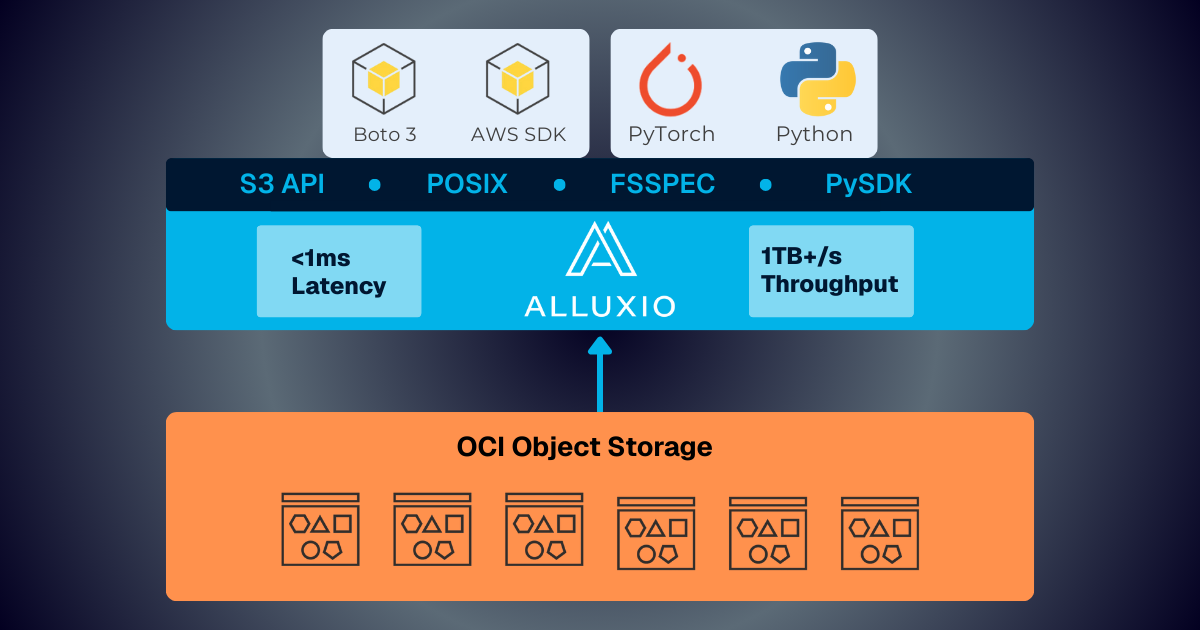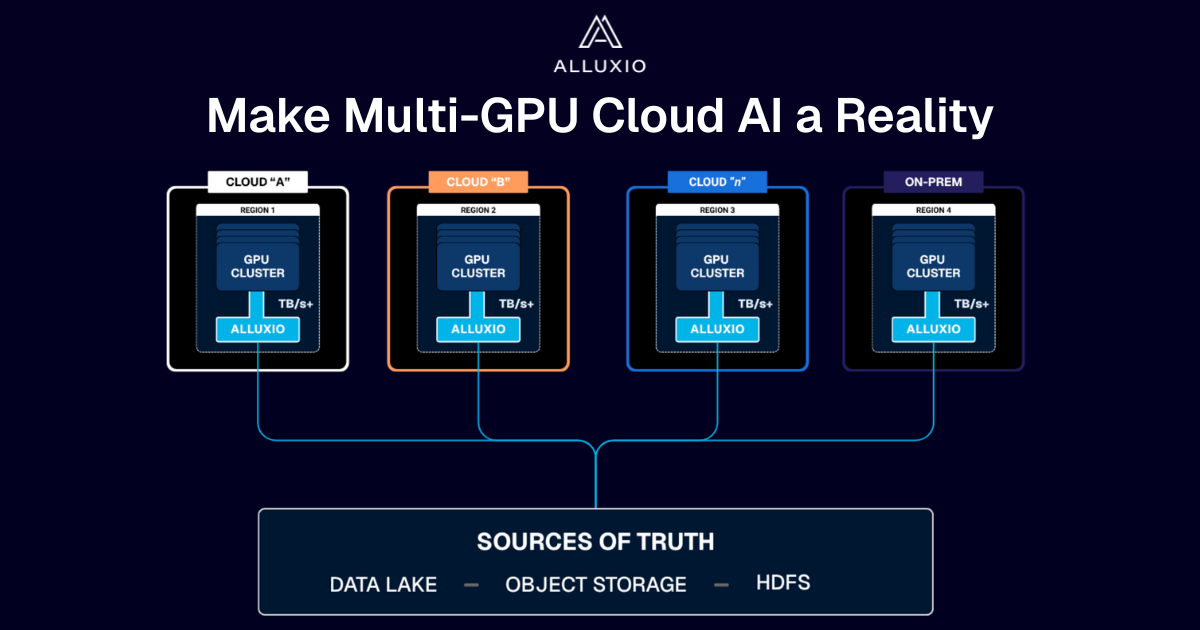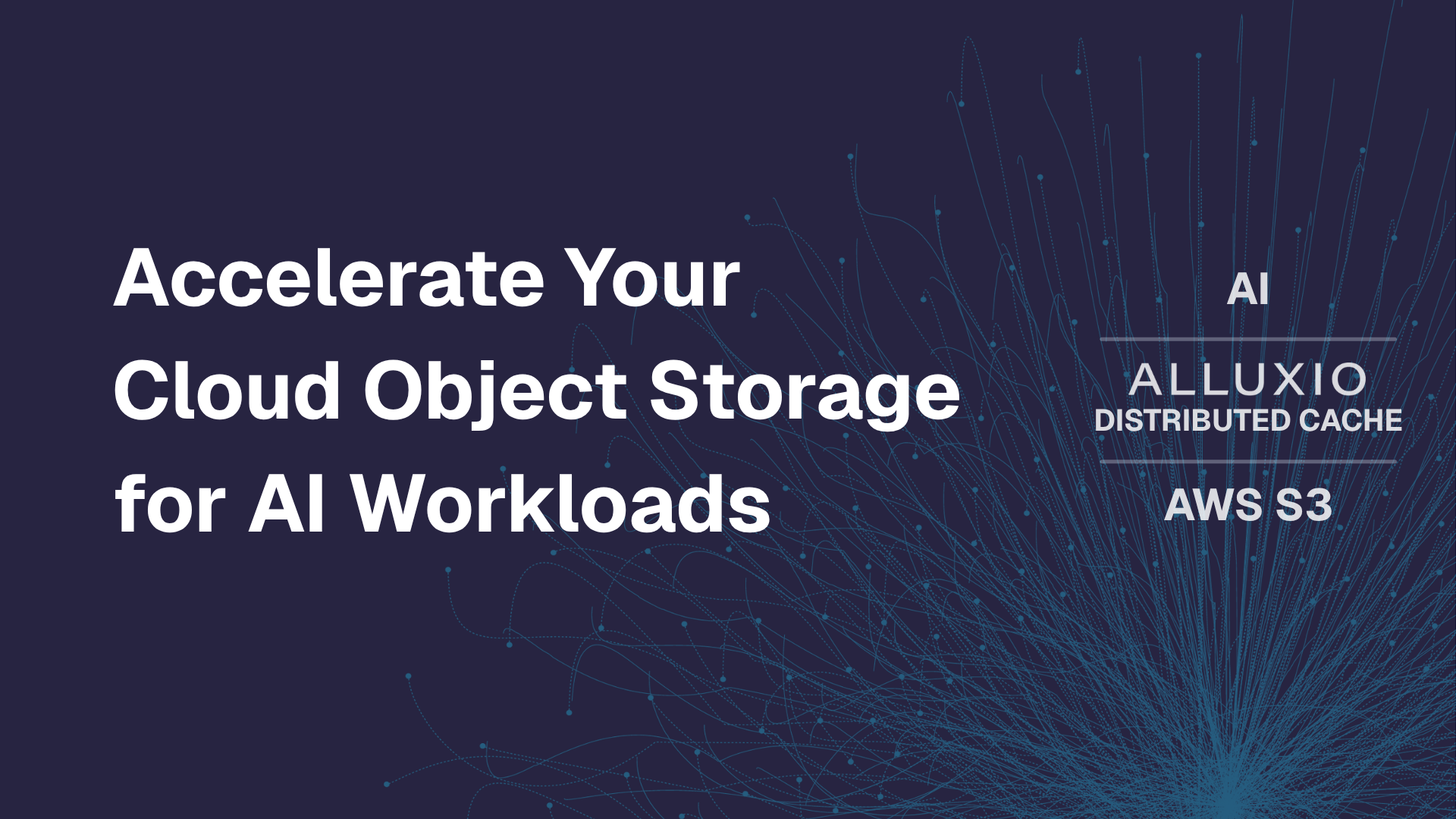Products
Four Different Ways to Write to Alluxio
August 19, 2019
Alluxio is an open-source data orchestration system for analytics and AI workloads. Distributed applications like Apache Spark or Apache Hive can access Alluxio through its HDFS-compatible interface without code change. We refer to external storage such as HDFS or S3 as under storage.
Alluxio is a new layer on top of under storage systems that can not only improve raw I/O performance but also enables applications flexible options to read, write and manage files. This article focuses on describing different ways to write files to Alluxio, realizing the tradeoffs in performance, consistency, and also the level of fault tolerance compared to HDFS.
Given an application such as a Spark job which saves its output to an external storage service; Writing the job output to the memory layer in a colocated Alluxio worker will achieve the best write performance. Due to the volatility of memory, when a node in Alluxio goes down or restarts, any data in that node’s memory is lost.
To prevent data loss, Alluxio provides the ability to write the data to the persistent under storage either synchronously or asynchronously by configuring client-side Write Types. Each write type has benefits and drawbacks associated with it. Applications that write to Alluxio storage should consider the different write types and perform a cost-benefit analysis to determine the write type which is best-suited for the application requirements.
A summary of the available write types are listed below:
Write TypeDescriptionWrite SpeedFault ToleranceMUST_CACHEWrites directly to Alluxio memoryVery fastData loss if a worker crashesTHROUGHWrites directly to under storagelimited to under storage throughputDependent upon under storageCACHE_THROUGHWrites to Alluxio and under storage synchronouslyData in memory and persisted to under storage synchronouslyDependent upon under storageASYNC_THROUGHWrites to Alluxio first, then asynchronously writes to the under storageNearly as fast as MUST_CACHEand data persisted to under storage without user interactionPossible to lose data if only 1 replica is written
Write types are a client side property which means they can be modified when submitting the application without restarting any Alluxio processes. For example, to set the Alluxio write type to CACHE_THROUGH when submitting a Spark job you can add the following options to the spark-submit:
$ spark-submit \ --conf 'spark.driver.extraJavaOptions=-Dalluxio.user.file.writetype.default=CACHE_THROUGH' \ --conf 'spark.executor.extraJavaOptions=-Dalluxio.user.file.writetype.default=CACHE_THROUGH' \ ...
Here are some general bits of advice when choosing the right write type for your applications:
- For temporary data which doesn’t need to be saved or data that is very cheap to re-generate, use
MUST_CACHEto write directly to Alluxio memory. It will then replicates over time, least safe, but most performant. - For data created that will not be used in the near term, use
THROUGHto write it directly from the client application persisting immediately to the under storage, without caching another copy. This leaves more room in Alluxio storage for data which needs to be read fast and frequently. - For data must be persisted at the moment when the writer application returns, and will be used by other Alluxio applications very soon, use
CACHE_THROUGHto both write data into Alluxio and the under storage. Note that, Alluxio may create replicas over time in Alluxio based on the data access pattern. - For data needs to be persisted and doesn’t need to be used immediately, use
ASYNC_THROUGHwhich writes directly to Alluxio and then asynchronously persists data to the UFS.
.png)
Blog

Alluxio and Oracle Cloud Infrastructure: Delivering Sub-Millisecond Latency for AI Workloads
Oracle Cloud Infrastructure has published a technical solution blog demonstrating how Alluxio on Oracle Cloud Infrastructure (OCI) delivers exceptional performance for AI and machine learning workloads, achieving sub-millisecond average latency, near-linear scalability, and over 90% GPU utilization across 350 accelerators.

Make Multi-GPU Cloud AI a Reality
If you’re building large-scale AI, you’re already multi-cloud by choice (to avoid lock-in) or by necessity (to access scarce GPU capacity). Teams frequently chase capacity bursts, “we need 1,000 GPUs for eight weeks,” across whichever regions or providers can deliver. What slows you down isn’t GPUs, it’s data. Simply accessing the data needed to train, deploy, and serve AI models at the speed and scale required – wherever AI workloads and GPUs are deployed – is in fact not simple at all. In this article, learn how Alluxio brings Simplicity, Speed, and Scale to Multi-GPU Cloud deployments.

